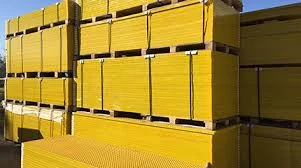
-
 Afrikaans
Afrikaans -
 Albanian
Albanian -
 Amharic
Amharic -
 Arabic
Arabic -
 Armenian
Armenian -
 Azerbaijani
Azerbaijani -
 Basque
Basque -
 Belarusian
Belarusian -
 Bengali
Bengali -
 Bosnian
Bosnian -
 Bulgarian
Bulgarian -
 Catalan
Catalan -
 Cebuano
Cebuano -
 China
China -
 China (Taiwan)
China (Taiwan) -
 Corsican
Corsican -
 Croatian
Croatian -
 Czech
Czech -
 Danish
Danish -
 Dutch
Dutch -
 English
English -
 Esperanto
Esperanto -
 Estonian
Estonian -
 Finnish
Finnish -
 French
French -
 Frisian
Frisian -
 Galician
Galician -
 Georgian
Georgian -
 German
German -
 Greek
Greek -
 Gujarati
Gujarati -
 Haitian Creole
Haitian Creole -
 hausa
hausa -
 hawaiian
hawaiian -
 Hebrew
Hebrew -
 Hindi
Hindi -
 Miao
Miao -
 Hungarian
Hungarian -
 Icelandic
Icelandic -
 igbo
igbo -
 Indonesian
Indonesian -
 irish
irish -
 Italian
Italian -
 Japanese
Japanese -
 Javanese
Javanese -
 Kannada
Kannada -
 kazakh
kazakh -
 Khmer
Khmer -
 Rwandese
Rwandese -
 Korean
Korean -
 Kurdish
Kurdish -
 Kyrgyz
Kyrgyz -
 Lao
Lao -
 Latin
Latin -
 Latvian
Latvian -
 Lithuanian
Lithuanian -
 Luxembourgish
Luxembourgish -
 Macedonian
Macedonian -
 Malgashi
Malgashi -
 Malay
Malay -
 Malayalam
Malayalam -
 Maltese
Maltese -
 Maori
Maori -
 Marathi
Marathi -
 Mongolian
Mongolian -
 Myanmar
Myanmar -
 Nepali
Nepali -
 Norwegian
Norwegian -
 Norwegian
Norwegian -
 Occitan
Occitan -
 Pashto
Pashto -
 Persian
Persian -
 Polish
Polish -
 Portuguese
Portuguese -
 Punjabi
Punjabi -
 Romanian
Romanian -
 Russian
Russian -
 Samoan
Samoan -
 Scottish Gaelic
Scottish Gaelic -
 Serbian
Serbian -
 Sesotho
Sesotho -
 Shona
Shona -
 Sindhi
Sindhi -
 Sinhala
Sinhala -
 Slovak
Slovak -
 Slovenian
Slovenian -
 Somali
Somali -
 Spanish
Spanish -
 Sundanese
Sundanese -
 Swahili
Swahili -
 Swedish
Swedish -
 Tagalog
Tagalog -
 Tajik
Tajik -
 Tamil
Tamil -
 Tatar
Tatar -
 Telugu
Telugu -
 Thai
Thai -
 Turkish
Turkish -
 Turkmen
Turkmen -
 Ukrainian
Ukrainian -
 Urdu
Urdu -
 Uighur
Uighur -
 Uzbek
Uzbek -
 Vietnamese
Vietnamese -
 Welsh
Welsh -
 Bantu
Bantu -
 Yiddish
Yiddish -
 Yoruba
Yoruba -
 Zulu
Zulu
grp pipe fittings
Understanding GRP Pipe Fittings A Comprehensive Guide
Glass Reinforced Plastic (GRP) pipe fittings have evolved into essential components in various industries due to their outstanding properties and advantages. With the increasing demand for durable and corrosion-resistant materials, GRP fittings have taken center stage in applications ranging from water management systems to industrial processes.
What is GRP?
GRP, or Glass Reinforced Plastic, is a composite material made of a polymer matrix reinforced with glass fibers. This construction leads to a lightweight material that boasts high strength and excellent resistance to environmental factors such as corrosion, temperature fluctuations, and chemical exposure. These attributes make GRP an ideal choice for piping systems that require longevity and reliability.
Advantages of GRP Pipe Fittings
1. Corrosion Resistance One of the most prominent benefits of GRP pipe fittings is their resistance to corrosion. Traditional materials like steel or iron are susceptible to rust and degradation when exposed to harsh environments. In contrast, GRP fittings can withstand aggressive chemicals and moisture, extending the lifespan of the entire piping system.
2. Lightweight GRP fittings are significantly lighter than metal alternatives. This feature not only simplifies transportation and installation but also reduces the structural load on buildings and supports.
3. Ease of Installation Due to their lightweight nature and innovative design, GRP fittings are easier to handle and install compared to traditional materials. The fittings can be custom fabricated, allowing for quicker installation processes, which in turn saves labor costs and reduces downtime.
grp pipe fittings

4. Cost-Effectiveness Although the initial investment for GRP pipe fittings may seem high, their durability leads to lower maintenance costs and fewer replacements over time. This long-term cost-effectiveness makes GRP a wise financial choice for many organizations.
5. Thermal Insulation GRP fittings possess excellent thermal insulation properties, reducing heat loss or gain in various applications. This characteristic is especially beneficial in systems where temperature control is crucial.
Applications of GRP Pipe Fittings
GRP fittings find utility in a myriad of industries. Water supply and drainage systems often incorporate GRP due to its corrosion resistance and structural integrity. In the oil and gas sector, GRP fittings are pivotal in transporting various fluids without the risk of contamination. Additionally, in the chemical processing industry, GRP proves invaluable for handling aggressive substances with minimal risk of damage.
Moreover, municipal projects, such as sewage systems and stormwater management, frequently utilize GRP fittings for their resilience and efficiency in managing wastewater. The adaptability of GRP ensures it meets the specific requirements of each application.
Conclusion
In summary, GRP pipe fittings offer a multitude of advantages that make them a compelling choice for various piping applications. Their exceptional resistance to corrosion, lightweight nature, ease of installation, cost-effectiveness, and thermal insulation properties contribute to their growing popularity across different sectors. As industries continue to seek durable and efficient solutions to meet their needs, GRP pipe fittings will undoubtedly remain an integral component of modern infrastructure. Embracing GRP technology represents a step towards sustainability and efficiency, paving the way for innovative solutions in piping systems worldwide.
Latest news
-
Exploring the Benefits of Top Hammer Drifter Rods for Enhanced Drilling PerformanceNewsJun.10,2025
-
High-Precision Fiberglass Winding Machine for GRP/FRP Pipe Production – Reliable & Efficient SolutionsNewsJun.10,2025
-
FRP Pipes & Fittings for Shipbuilding - Corrosion-Resistant & LightweightNewsJun.09,2025
-
Premium FRP Flooring Solutions Durable & Slip-ResistantNewsJun.09,2025
-
Premium Fiberglass Rectangular Tanks Durable & Lightweight SolutionNewsJun.09,2025
-
Tapered Drill String Design Guide Durable Performance & UsesNewsJun.09,2025









